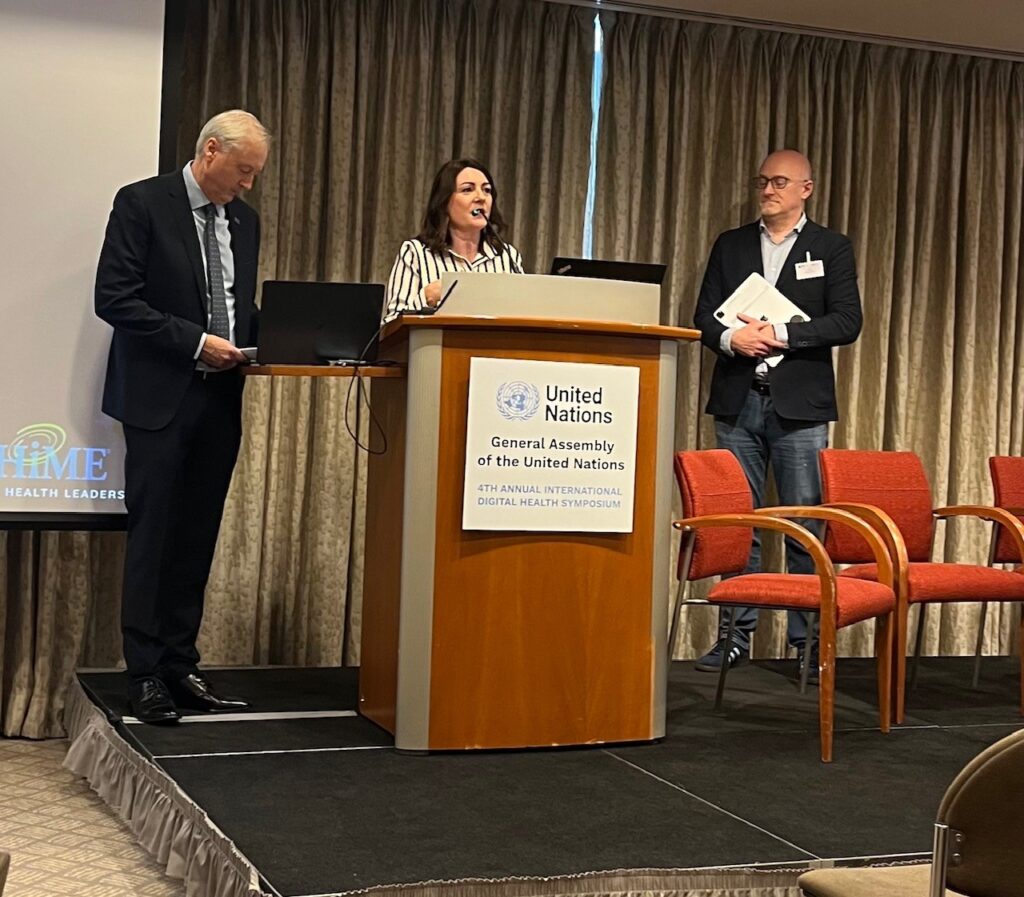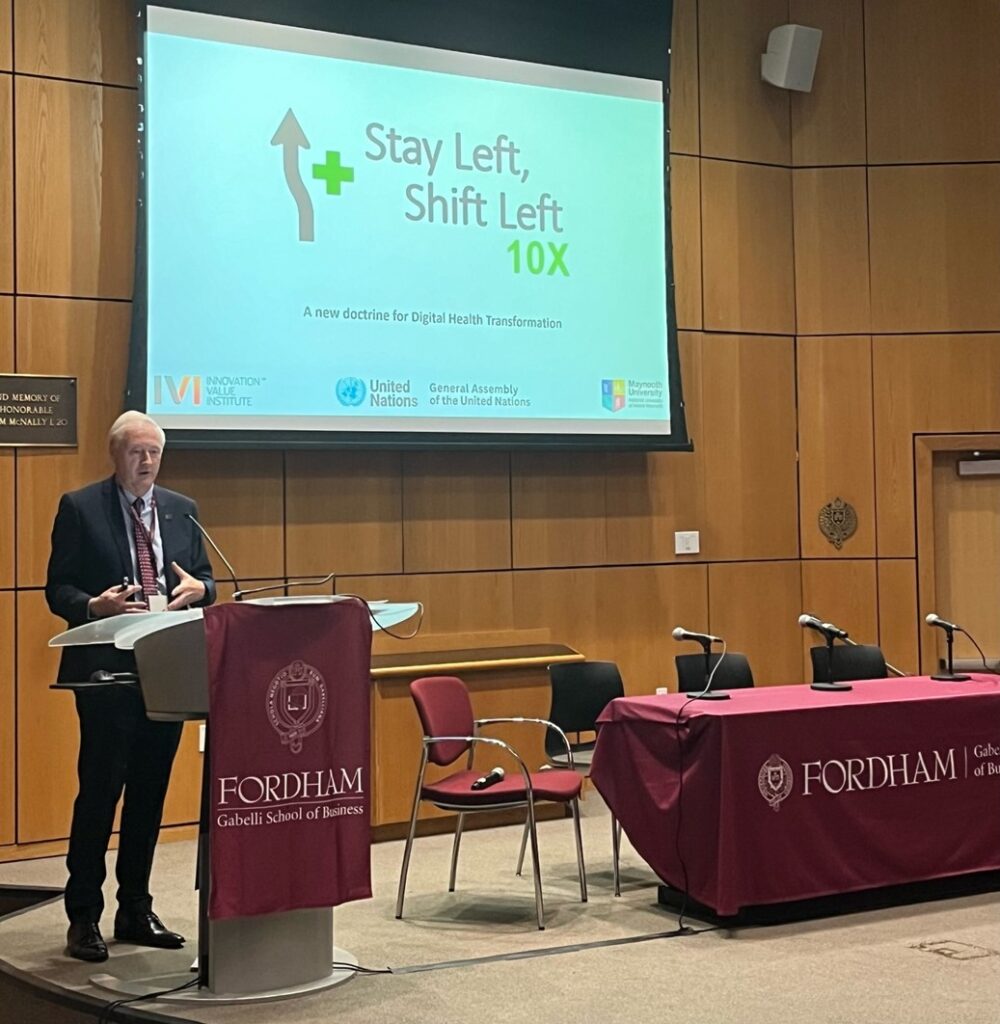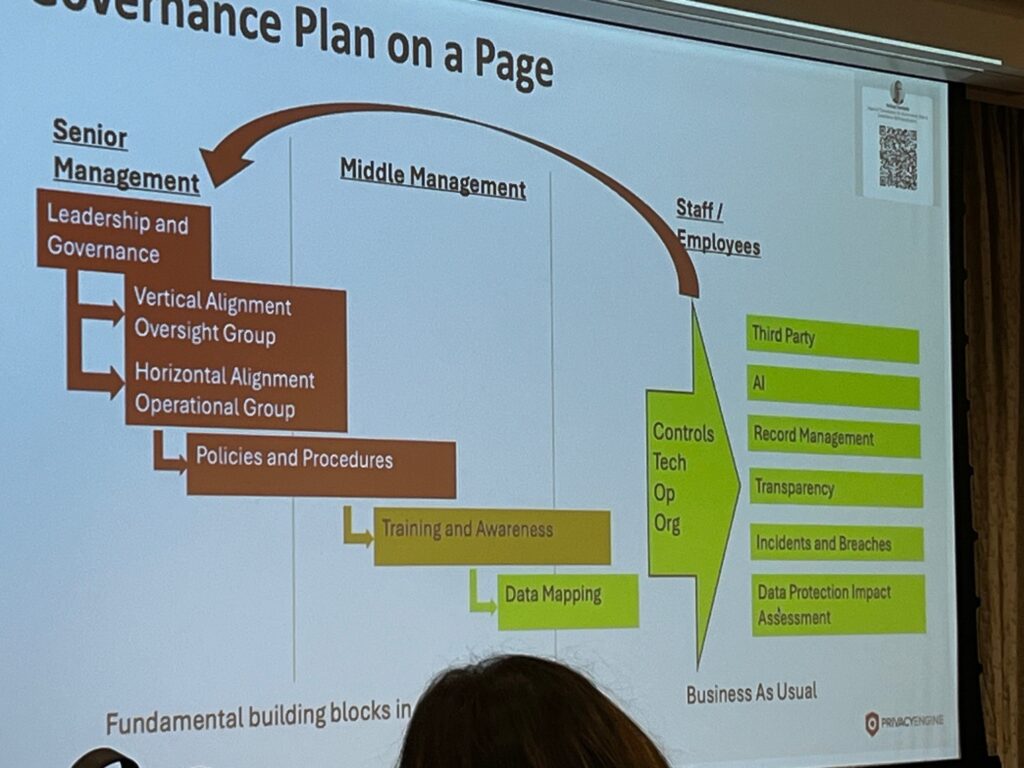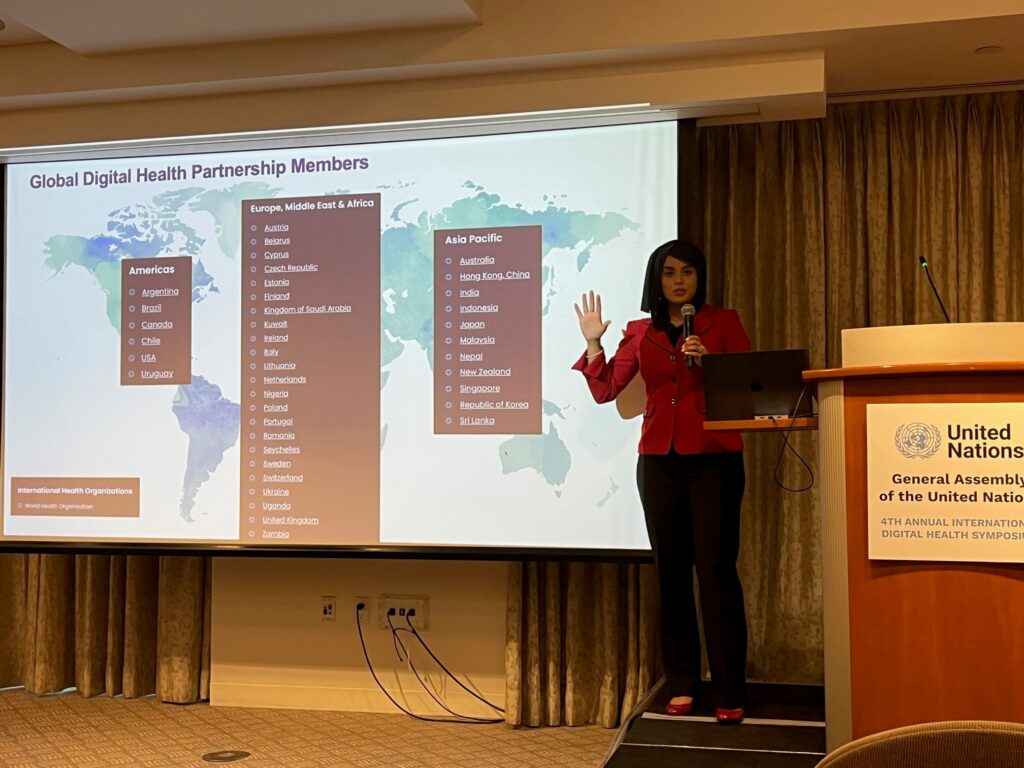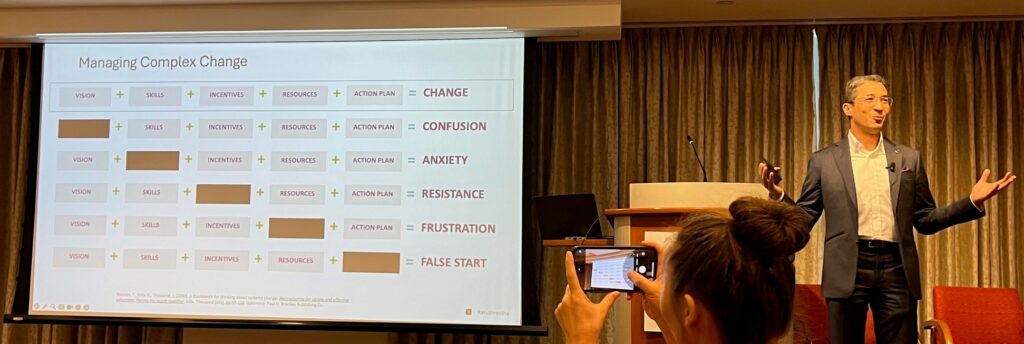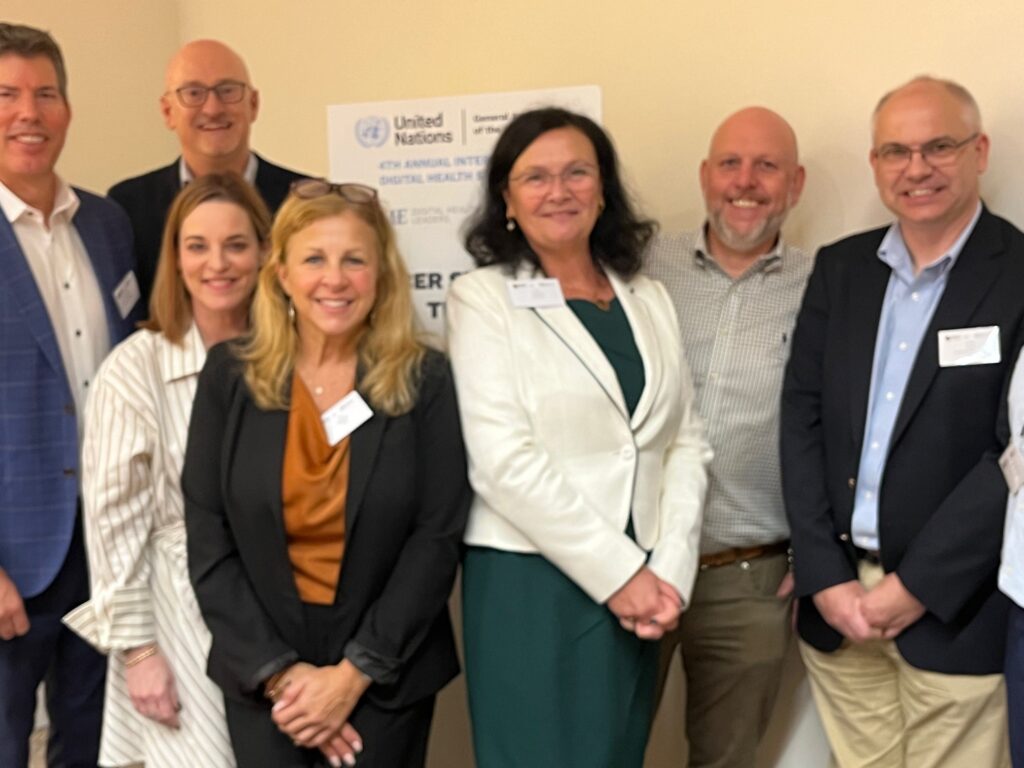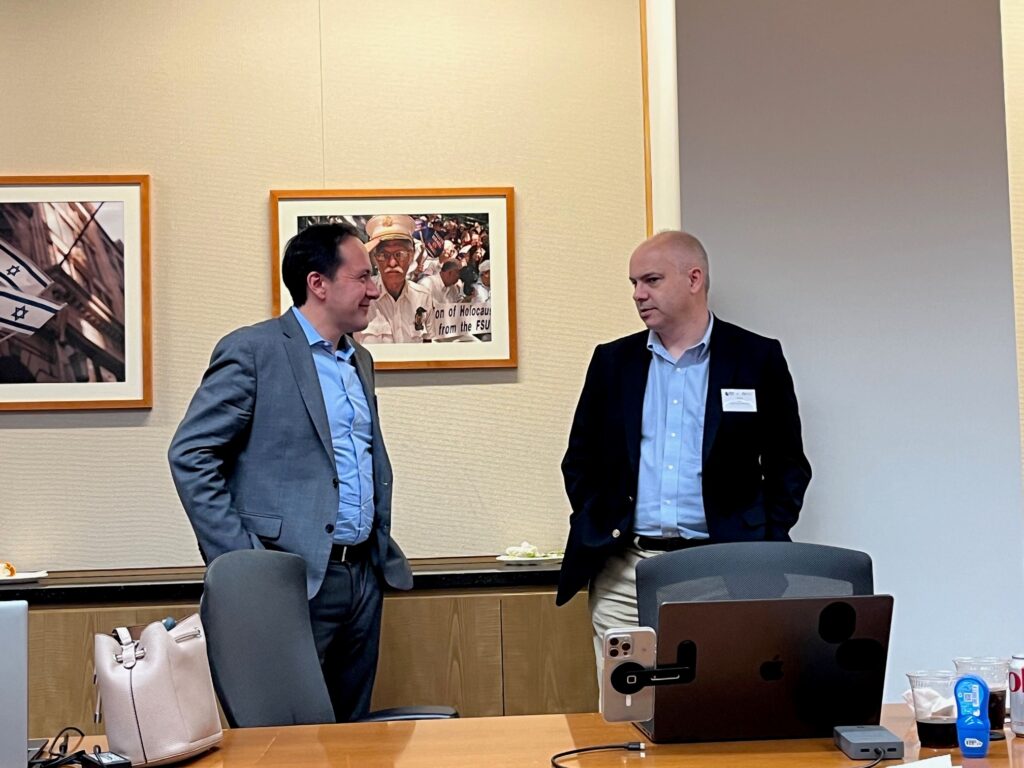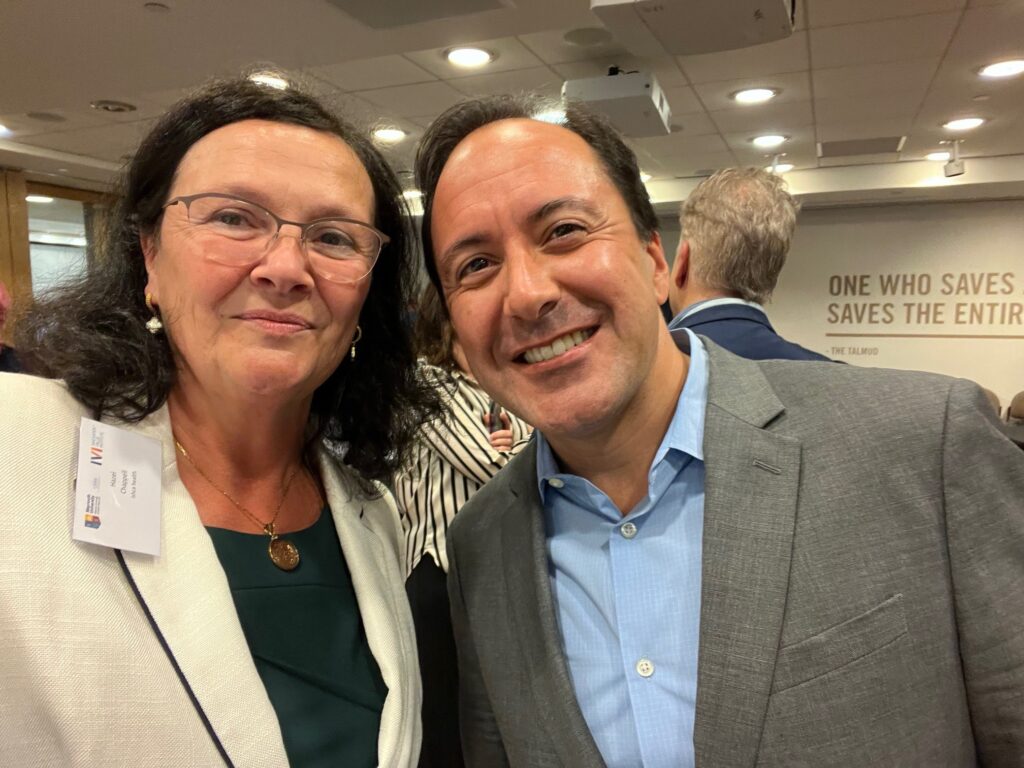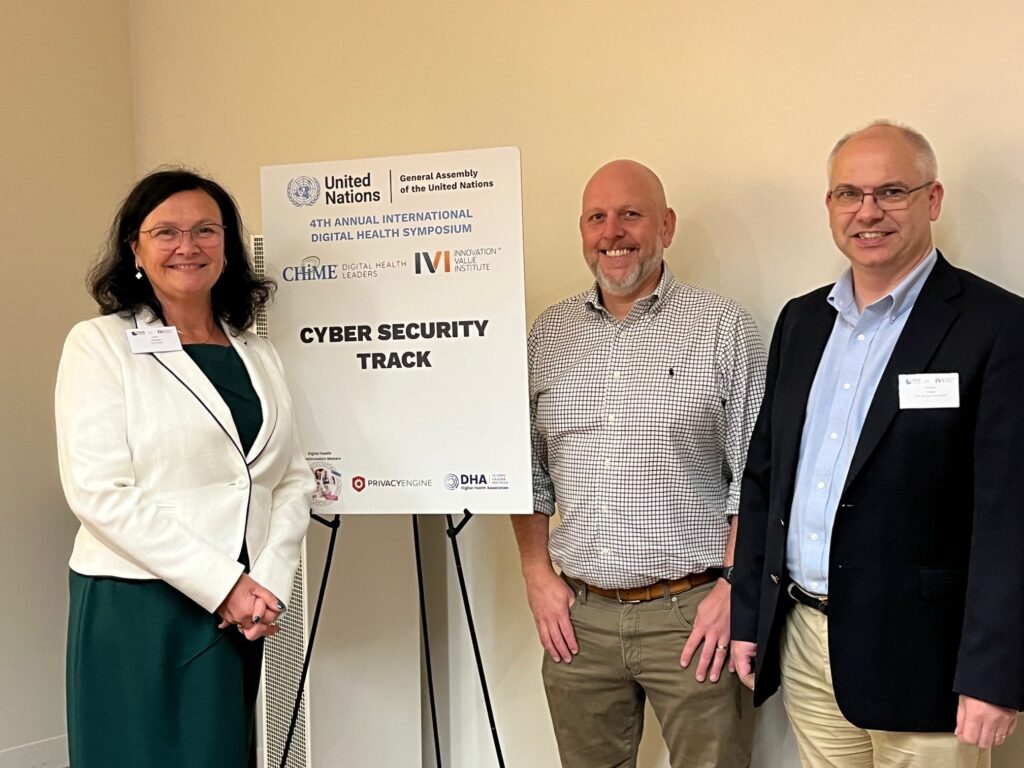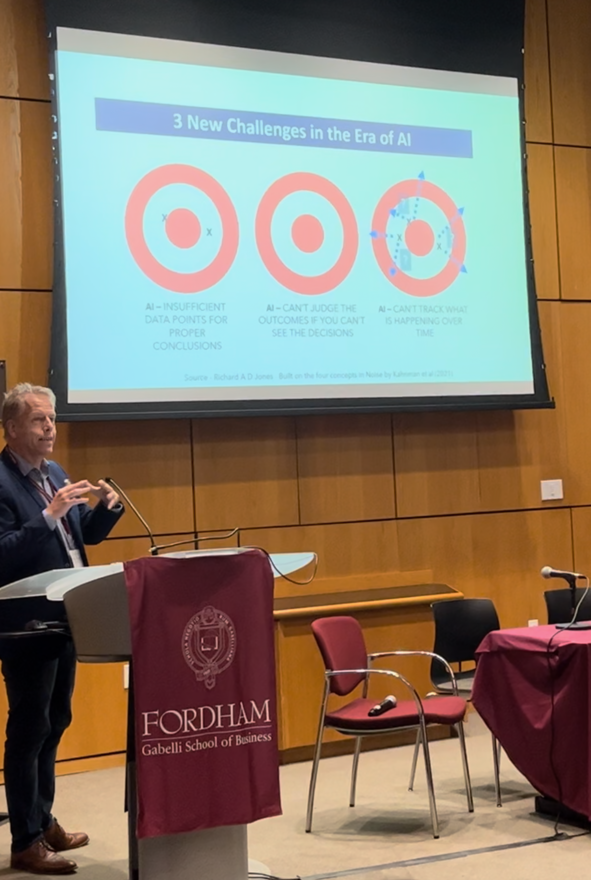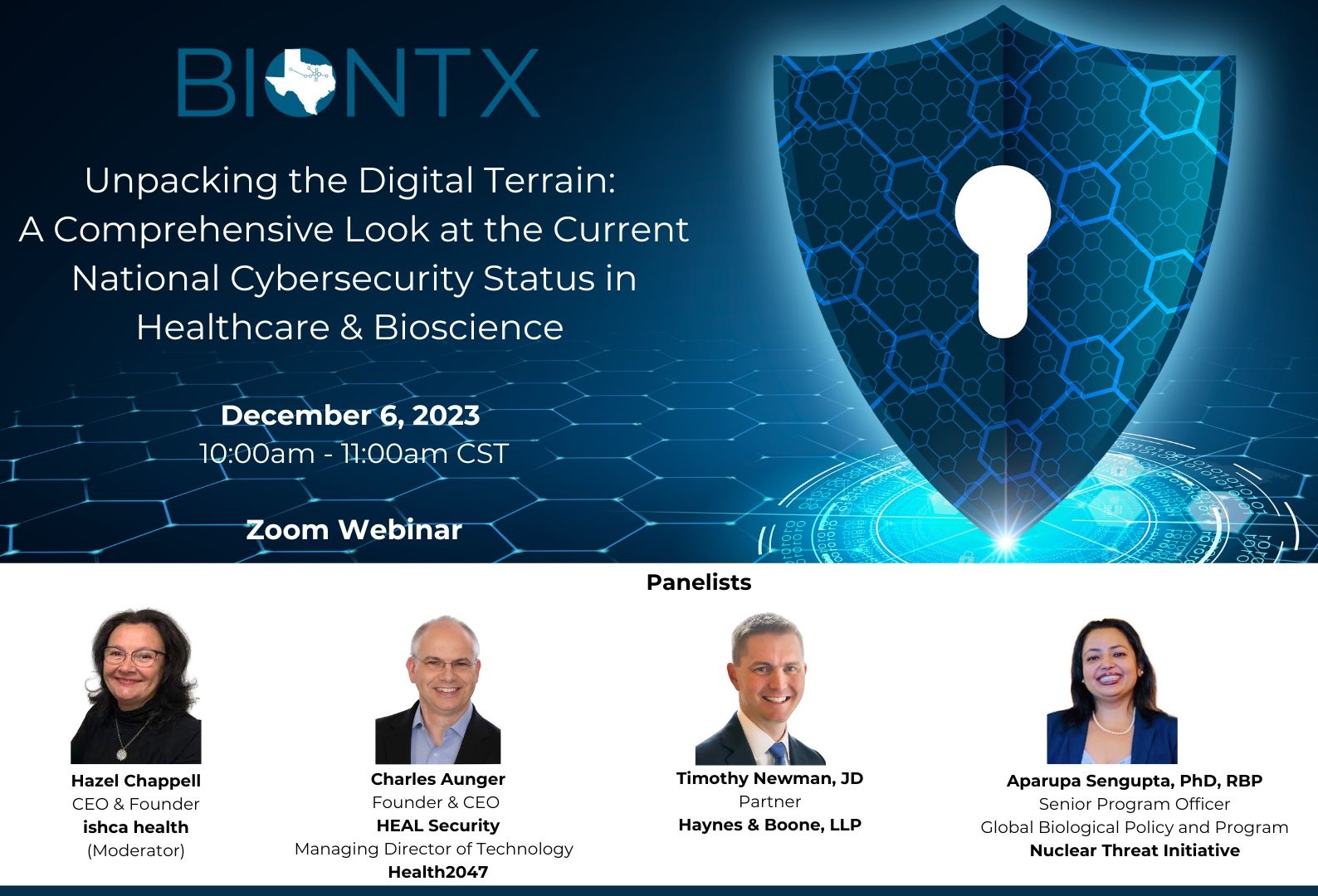
I had the delight to accept and attend the United Nations General Assembly – Digital Health Symposium in New York last week as a Change Leader who is passionate about data security. It was my first time in New York, but I will get into that later!
For background, the event was chaired by Professor Martin Curley and co-chaired by Consultant Radiologist John Sheehan along with New Zealand’s eminent Digital Health Leader Ryl Jensen, supported by Maynooth University, the Innovation Value Institute, and health organization CHIME. As expected, this was an event with a collection of intellectual supercolliders who are bonded together by one mission: to transform healthcare delivery by leveraging digital technologies to keep well people healthy, shift care from hospitals to home and community settings, and achieve tenfold improvements in efficiency, cost, and patient outcomes.
Upon reflection, from listening to speakers who lead on innovations in place supporting the above mission, one of the key takeaways is the need and intention for the rest of healthcare leaders to go from Talking to Doing. Without actions, results cannot be accomplished, outcomes can’t be achieved. This event showcased the doing that is taking place. Change is driving us all forward with the focus on StayLeftShiftLeft10X, resulting in keeping the patient at home for well-being and well care, which is a benefit for all involved. #healthathome #SDG3
As a directed open collaborative ecosystem, the four principles around this open innovation are:
• High trust
• Highly capable individuals
• Shared vision – StayLeftShiftLeft10X
• Digital technology
Expanding on some further key takeaways:
• The announcement of the collaboration between IVI, Maynooth, and Northwell Health, NY
• An open mindset is fundamental to supporting the Leapfrog capability
• Change management was a common theme at this event, which is a critical element in underpinning the success of complex change involving People (partnerships, workforce, leadership, users), Processes (workflows), Technology (software, security), and Data (quality, security, ownership).
• Keynote speakers Aaron Miri and Rasu Shrestha, MD, energetically (& I mean energy & enthusiasm) delivered on the effectiveness of Change Leadership to help drive change forward from a human-centric approach sharing their respective organizational innovative successes.
– On a personal note, I have waited a long time to hear leaders speak on this topic with such passion since my arrival in America. The time for change is now!
• The World Economic Forum’s vision focuses on outcomes, access, affordability, and efficiency.
• I was greatly excited to learn about C2-AI and hear Richard Jones speak about how AI has its place in reducing harm. It’s the new language of patient safety. C2-Ai’s core technology focuses on identifying and reducing avoidable harm, mortality, and clinical variations in hospitals.
• AI’s role in imaging was presented with powerful visual comparisons to support clinical decision-making.
• AI supports Augmented Intelligence, which transforms data into decisions and outcomes.
• The role and priority of Governance, and how it sets organizations up for success, spotlighted how to avoid failure at every level.
• ASTP’s drive on public-private collaboration to make better health available, enabled by data through the capture, access, exchange, and use of data through standards for application programming interfaces.
With pride I took the role of panel leader for a cybersecurity session where the insights and foresights shared by my fellow panelists Charles Aunger and Chris van Schijndel lit the room. Key points from this session included:
• Design thinking for cybersecurity revolves around leadership having an embedded mindset of resilience, winning over workforce and end users, and that anticipating, planning, and practicing sets us up to be confident for the expected cyber threats and attacks.
• Drive co-responsibility for response and recovery between cyber and business/clinical leadership.
• Identify critical technology and tech-supplier dependencies and single points of failure.
• Focus on outcomes (cyber and patient). Cyber frameworks are helpful; however, question if ‘traditional’ cyber activities are really driving outcomes vs. being ‘risk-placebos’ (looking at you, risk questionnaires, contracts, computer-based training)! Every organization is different in size, resources, and funding.
• Weigh in on Risk Management as opposed to constant focus on Risk Assessment.
• Cyber Safety is Patient Safety.
I am very much looking forward to fostering connections to keep pushing forward with some great folks from this trip. I am super excited to be part of this group of “intellectual supercolliders” to help drive this change as apart of #StayLeftShiftLeft10X which I mentioned above. Always thankful and grateful to Prof Martin Curley for his support and understanding of my value in the Digital Health place.
To conclude, I want to highlight my experience as a first-time New Yorker for a few days. Whilst the days were full and I wanted to be at the UNGA DH Symposium every second I could, I travelled on the Long Island Railroad services, the NY subways, in the yellow cabs. I got to visit the tip of Central Park, and I experienced walking through Central Station. Joe and Jill visited whilst I was there too, only to hear the helicopters, police sirens, EMS sirens, and see the ‘smoke’ coming through the footpath iron grates from the subway. It was not enough and one thing I know is – New York – I will be back!
